Crew 310 Mid-Mission Research Report
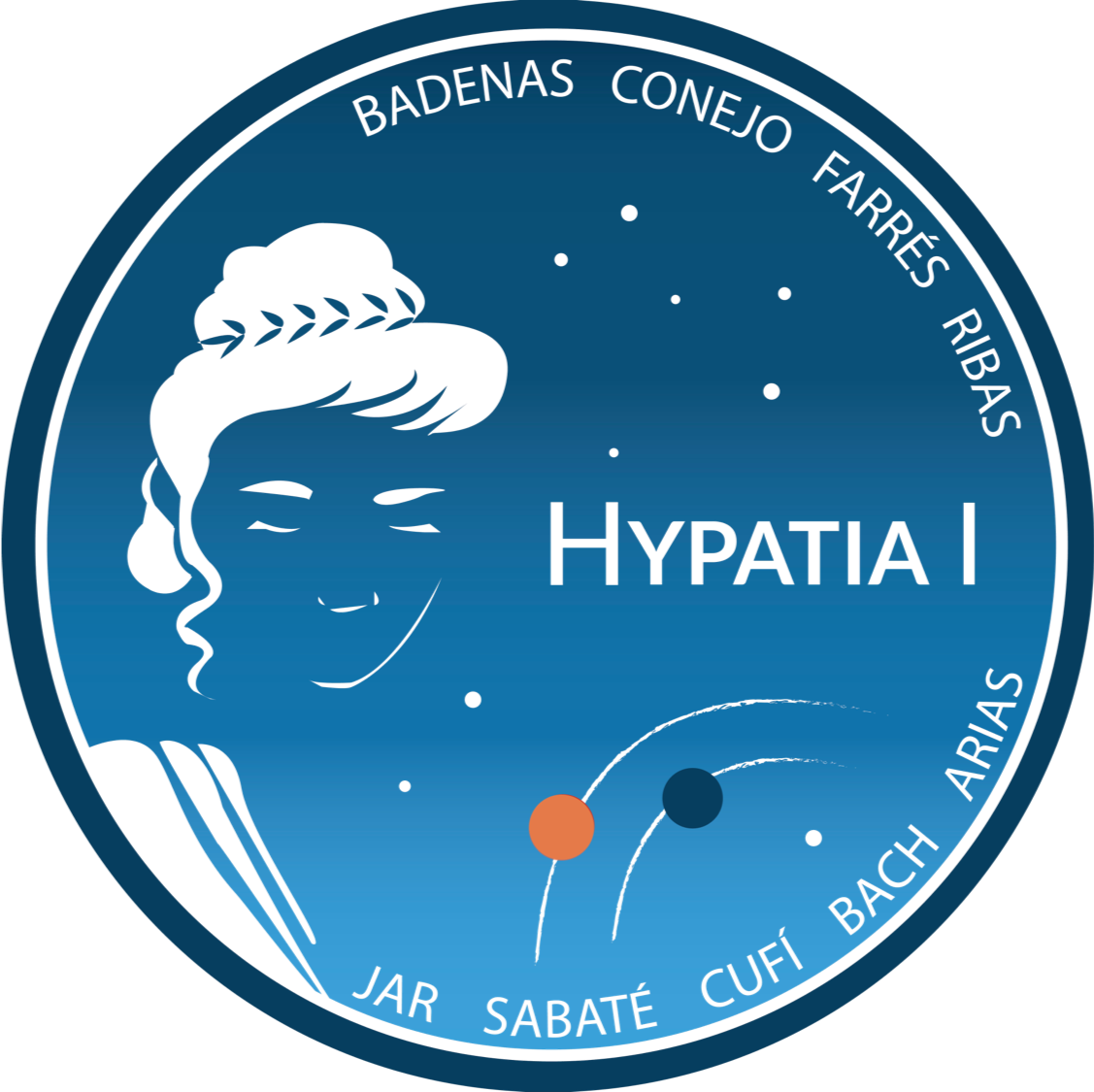
Submitted on: SOL 7
Date: February 9, 2025
Astronomy
Ariadna Farres Basiana (Crew Commander & Astronomer) is combining her management responsibilities at the MDRS with two research projects. Her astronomy project is:
Monitoring the Sun activity from Mars: The main goal of this project is to observe the Sun from the Musk Observatory, monitoring the evolution of sunspots and prominences. Astronauts on Mars will be affected by solar radiation, given the thin atmosphere of the red plane. The high winds during the first week have limited the number of observations. The images are now being processed and will be analyzed together with next week observations.
Helena Arias (Crew Engineer) is combining her duties as engineer with different research projects. Her astronomy-related project:
Astrophotography on Mar: This project aims to capture images of the Martian sky for scientific outreach and educational purposes across diverse audiences. The images are obtained using the MDRS-WF telescope and the RCOS 16" Ritchey-Chretien telescope.
So far, the only celestial object observed has been Messier 82, which was imaged using the RCOS 16". Further observations have been hindered by persistent cloud cover over New Mexico. However, ten additional observations are planned for the upcoming week, weather permitting.
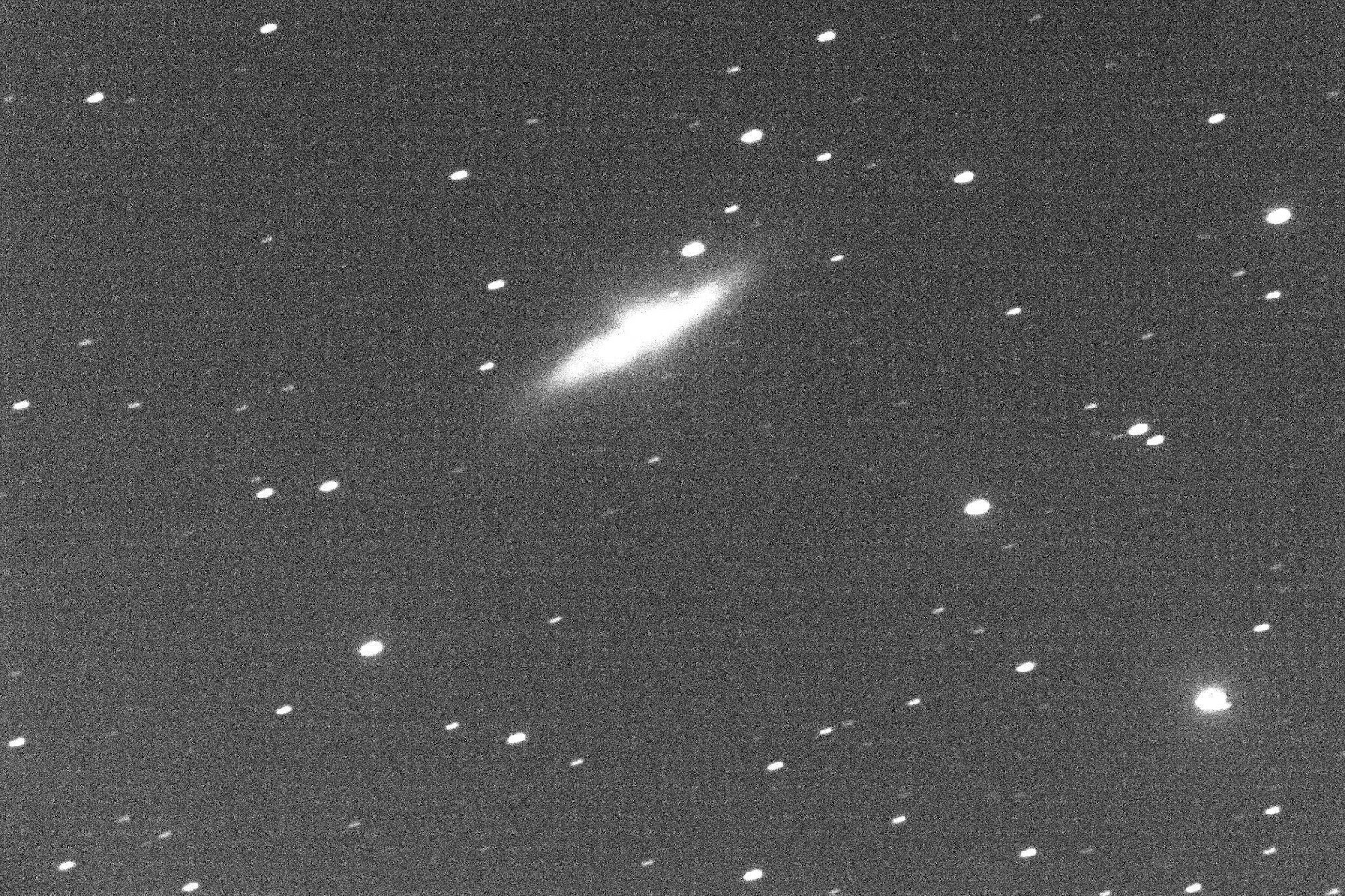
Geology
Marina Martinez (Green Hab Officer & Biologist) is combining her daily responsibilities in the GreenHab together with different research projects. Her main research project:
In-Situ Analysis in Sample Return Missions: Optimizing Space Exploration: The goal of this project is to optimize future sample-return missions to the Moon and Mars using instrumentation in situ to collect only highly scientific valuable samples, prioritizing quality over quantity. We are using two instruments to obtain compositional information of the collected samples.
The first instrument is the Portable Vanta Max X-ray Fluorescence provided by Evident Scientific (Olympus). It allows real-time XRF data in the field during EVAs, which offers a preliminary analysis to determine whether a sample is worth collecting. The Vanta was in two EVAs.
We experienced trouble during the first days of the simulation because the instrument batteries were not working. The company sent a replacement unit to the Station, which arrived in the evening of Sol 5 (Feb. 7).
The second instrument is the Spectroscout energy-dispersive XRF, which is settled in the Science Dome and intended to stay there. It provides more accurate compositional data by analyzing samples under vacuum conditions. It requires powdered samples and is particularly effective for studying muds and shales from the MDRS area. The results from this instrument guide final decisions on which samples to return to Earth.
The combination of these instruments offers several advantages for sample-return missions:
Pristine analyses: The results obtained in situ have no contamination from the Earth’s atmosphere.
Flexibility: The mission can be adjusted based on the obtained results
Cost efficiency: Less samples are brought back to Earth (less weight)
Geoconservation: It is a much more respectful way of collecting, minimizing the environmental impact.
So far, the Crew Geologist has collected samples from 5 different sites and performed numerous analyses using both instruments. Recommendations for future lunar and Martian exploration include addressing potential equipment issues (e.g., battery reliability), use specialized gloves, and provide a new methodology that promotes sustainable space exploration practices.
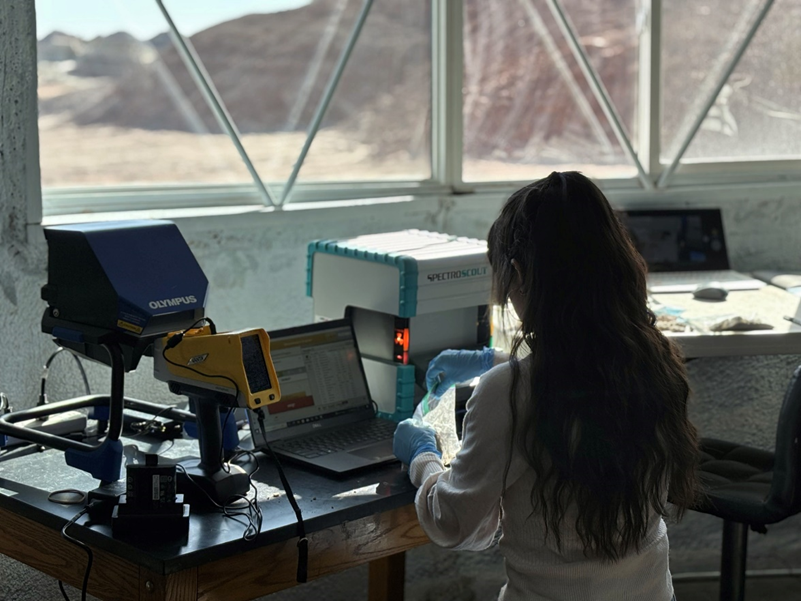
Engineering
Monica Roca i Aparici (Mission Specialist) is assisting the Crew Engineer of the mission and performing several projects. The engineering project is her main project:
Simulating Satellite Calibration orbiting Mars Using Corner Reflectors (with Sentinel-3 A&B): This project aims at installing a Corner Reflector at the MDRS, to calibrate Earth-orbiting satellites like the Sentinel-3 A&B using advanced radar techniques, likewise we will calibrate Mars orbiting satellites.
The Corner Reflector structure was installed early in the mission. It was fixed to the ground, on the concrete patch behind the station. The plates over the structure are also in place, screwed to the structure with bolts. The GNSS antenna is also mounted in the middle of the reflector, and it’s connected to the receiver inside the HAB, with a coaxial cable. The receiver is, in turn, connected to a Raspberry Pi to ensure the constant push of the RINEX files with the outside world. This is all correctly functioning and the RINEX files have been proven to contain the correct location. The receiver has also been configured with the final parameters.
What remains to do is:
Moving the antenna outside the reflector to its final configuration. The antenna shall be located right outside the reflector, attached to it with 3 bars that will hold a pole with the antenna on top.
Fixing the coaxial cable to the ground with pegs.
Arranging the internal (HAB) hardware (receiver, raspberry and ethernet switch) and their cable connections, in a neat way.
Points 1 and 2 will be hopefully finished tomorrow in EVA #14, and 3 will be finished in the following days.
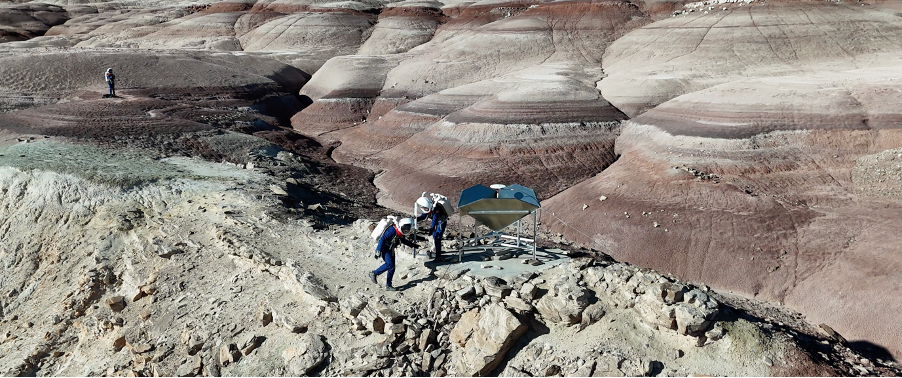
Helena Arias (Crew Engineer) is combining her duties as engineer with different research projects. Her astronomy-related project:
3D printing tools on Mars. This project explores the application of additive manufacturing techniques in an analogue Martian environment at the MDRS. As part of the study, structural test objects have been 3D printed on-site to evaluate an optimized solar panel design that enhances resistance to wind and dust. These prototypes have been installed outside the habitat during extravehicular activities (EVAs).
Additionally, functional geological research tools, as well as award-winning tool designs created by teenagers, are scheduled to be printed in the upcoming week.
Estel Blay (Health and Safety officer & Scientist) is combining her health and safety responsibilities at the MDRS with outreach and engineering projects:
Enhancing Solar Panel Efficiency for Dusty Mars Environments: The goal of the experiment is to analyze different mechanisms to reduce the impact of Martian dust on the solar panels. The experiment consists of two different kinds of analysis: one structural and the other focusing on coating options. Two different structures were designed pre-mission, and they are printed using a 3D printer at the MDRS, designed with origami techniques. One of the designs has been installed next to the sun observatory, with one structure folded and the other unfolded. Every day, the crew captures images of the design to identify any hotspots where the dust accumulates, in order to improve the design post-mission.
The second design has been experiencing some 3D printing issues. The engineer and the HSO have been discussing alternatives, and they will deploy it tomorrow next to the other design. The crew will continue taking images of the different structures once a day.
The coating experiment was set up outside, close to the MDRS solar panels. One of the sets presented some problems with the battery, and it will be reinstalled in one of the tunnels to make it easier to access. The data will support the analysis of different coatings to understand how the origami-designed panels could be covered in the future.
The images below show the coating experiment deployed next to the solar panels and the butterfly origami design.
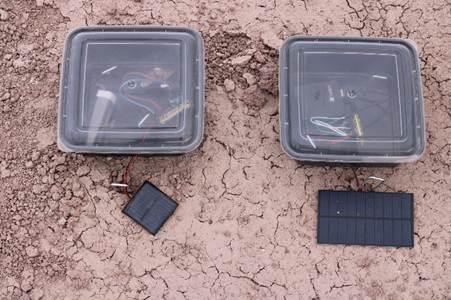
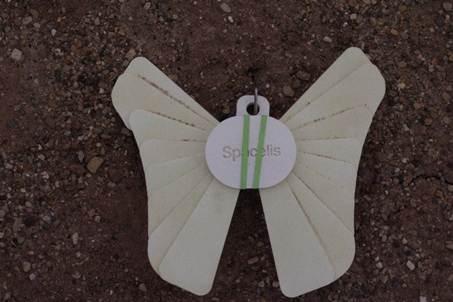
Ariadna Farres Basiana (Crew Commander & Astronomer) is combining her management responsibilities at the MDRS with two research projects. Her engineering project is:
Mars Instrument Deployment Test: This is part of a collaboration between the Hypatia crew and NASA Goddard’s Exploration & In-space Services and Heliophysics engineering group. The goal is to provide feedback on a deployable support system that is being developed for future Lunar and Mars exploration missions. The crew has taken the support system during the EVAs and tested how easy it is to put it on and off the rovers and place it near an area explored during an EVA. During the next weeks the crew will test moving the support system around the EVA area.
Human Factors
Helena Arias (Crew Engineer) is combining her duties as engineer with an engineering, a human factor and an astronomy-related project. The human factor project:
Assessing muscular weight loss on analogue missions. The objective of this project is to analyze muscular weight loss in female astronauts participating in a two-week analogue mission at the Mars Desert Research Station (MDRS). To mitigate muscle loss, the crew has followed a structured physical preparation plan along with daily nutritional guidelines.
Heart rate variability (HRV) measurements are being continuously recorded using a Garmin smartwatch. Additionally, other metrics, such as body weight and a short strength test, have been assessed twice and will be measured a third time before the conclusion of the mission to track each crew member’s physiological changes over time.
Monica Roca i Aparici (Mission Specialist) is assisting the Crew Engineer of the mission and performing an engineering and a human factors project. The human factor project:
Monitoring female body behaviour under (semi)extreme conditions: Female body and its reaction to extreme or semi-extreme conditions are not well understood. Studies on human factors have typically been based on male body. There is a lack of information and data regarding female behaviour under certain conditions that are not common daily on Earth but astronauts have to face during the astronaut daily life, and more in particular during the space walks or extravehicular activities.
The MDRS is a perfect place to carry out this study, particularly during EVAs, where hard work or long walks are performed. We are gathering data from the Hypatia II crew 310, during all EVAs using a Garmin watch. These data will be analysed by Human Factor research centres such as the Barcelona Institute of Global Health, ISGlobal, (https://www.isglobal.org/en/) as soon as the Hypatia II mission is concluded.
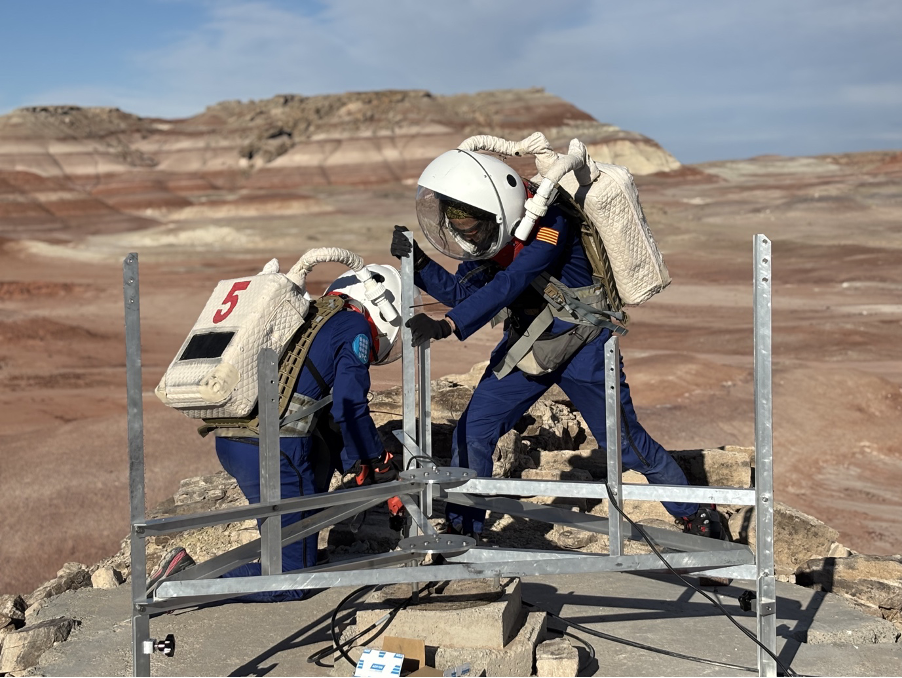
Biology
Estel Blay (Health and Safety officer & Scientist) is combining her health and safety responsibilities at the MDRS with outreach and engineering projects:
Space Tomato Seeds: This project was created in collaboration with the British School of Barcelona, where the girls from Year 11, with the support of the HSO, designed an experiment to evaluate the growth of tomato seeds as part of the Tomatosphere initiative. This initiative sends tomato seeds into space aboard the ISS and provides two sets of seeds to school groups (those that have been to space and those that haven’t) for them to analyze the growth of the tomato plants and try to determine which seeds are which.
The HSO set up the experiment, which will evaluate the effect of different types of water (clean, filtered, and grey water) on the tomato seeds, as well as the amount of light. The experiment has been deployed in the green hub using pots and petri dishes, completely independent of the ones already part of the MDRS.
The tomato seeds from Group X are growing faster than those in Group Y in all conditions. However, it is still too early to draw conclusions about the potential for space travel. Moreover, the filtered water seems to be a great option for watering the plants, as those seeds were the first to germinate. The different lighting options are not yet yielding results, as they are placed over the seeds in pots, which have not yet germinated.
The images below show one of the small green hubs used to filter the amount of light the plants are receiving, the small pots where the tomato seeds are planted, and the three types of water used in the experiment.
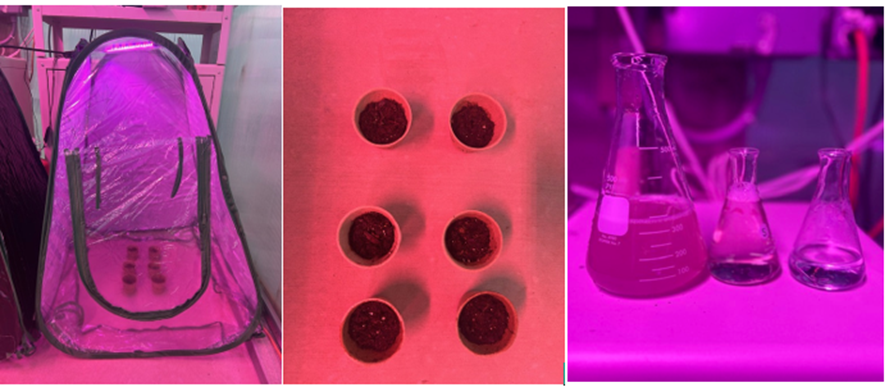
Sustainability
Jennifer García Carrizo (Crew Journalist) is reporting on the field the experience of Hypatia II crew at the MDRS, performing the daily journalist reports and sending the “Photograph of the day”, requested by the MDRS. She has a project related with sustainability:
Hypatia’́s Circular Odyssey: An interactive website featuring a digital twin of the MDRS will showcase various videos on sustainable practices and the circular economy implemented at the station. The goal is to highlight daily actions that ensure the mission’s sustainability and offer inspiration for similar efforts on Earth. So far, the entire base has been scanned, both inside and out, except for the crew members’ bedrooms.
The exterior of the base and its surroundings have also been scanned, and several sustainable practices have been recorded: use of the composter, sports and food routines, water management, and use of the reflector installed at the base. Each day, the crew is also reporting their sustainable practices through The Good Goal App.
The following sustainable practices remain to be documented: 1. Use of sustainable clothing that requires no ironing, repels odors and dirt and can be worn longer without washing. 2. Solar panels and how they work. 8. General video presentation of the project: what is the circular economy and what is sustainability? 3. Type of food consumed at the base: dehydrated food. 4. Water management at the station: how we shower and how we wash the dishes. 5. Use of The Good Goal App. 6. Use of the Astrocup menstrual cup. 7. Collection of sustainable geological samples. 9. Use of 3D printing for printing contingency materials.
Outreach and Communication
Anna Bach (Crew Executive Officer & Resident Artist) is combining her XO responsibilities at the MDRS with conducting several outreach and art projects:
Macro art by satellite: We planned to set up the macro piece of art between the first and the second Sols, using one EVA to set up the references with strings, and a second EVA to unfold the fabric. The plan was to leave the piece of art there for the entire mission, so that as many satellites as possible could pass over it during our mission. This way, we could ensure that we got the picture before retrieving the fabric.
However, in the first EVA, we noticed the wind would not allow for this plan. In fact, the wind didn’t let us set up the fabric in the first place, it was too strong and we had to abort and come back to the base.
Upon doing some thinking, we decided to modify the art piece from a “foot print” 65x35m long to a “cross” 40x40m. We also decided to wait for a less windy day, and set up the art piece right before the satellite pass. On the 6th Sol, we got lucky, and we got a very calm day with 2 satellite psses. We were able to set up the art piece early in the morning, and take it out on the afternoon, to avoid that stronger winds take out the fabric and carry it away.
We were able to capture some pictures with a dron as well. We are now waiting for the satellite image that is to be provided by OpenComsos, the company we are collaborating with.
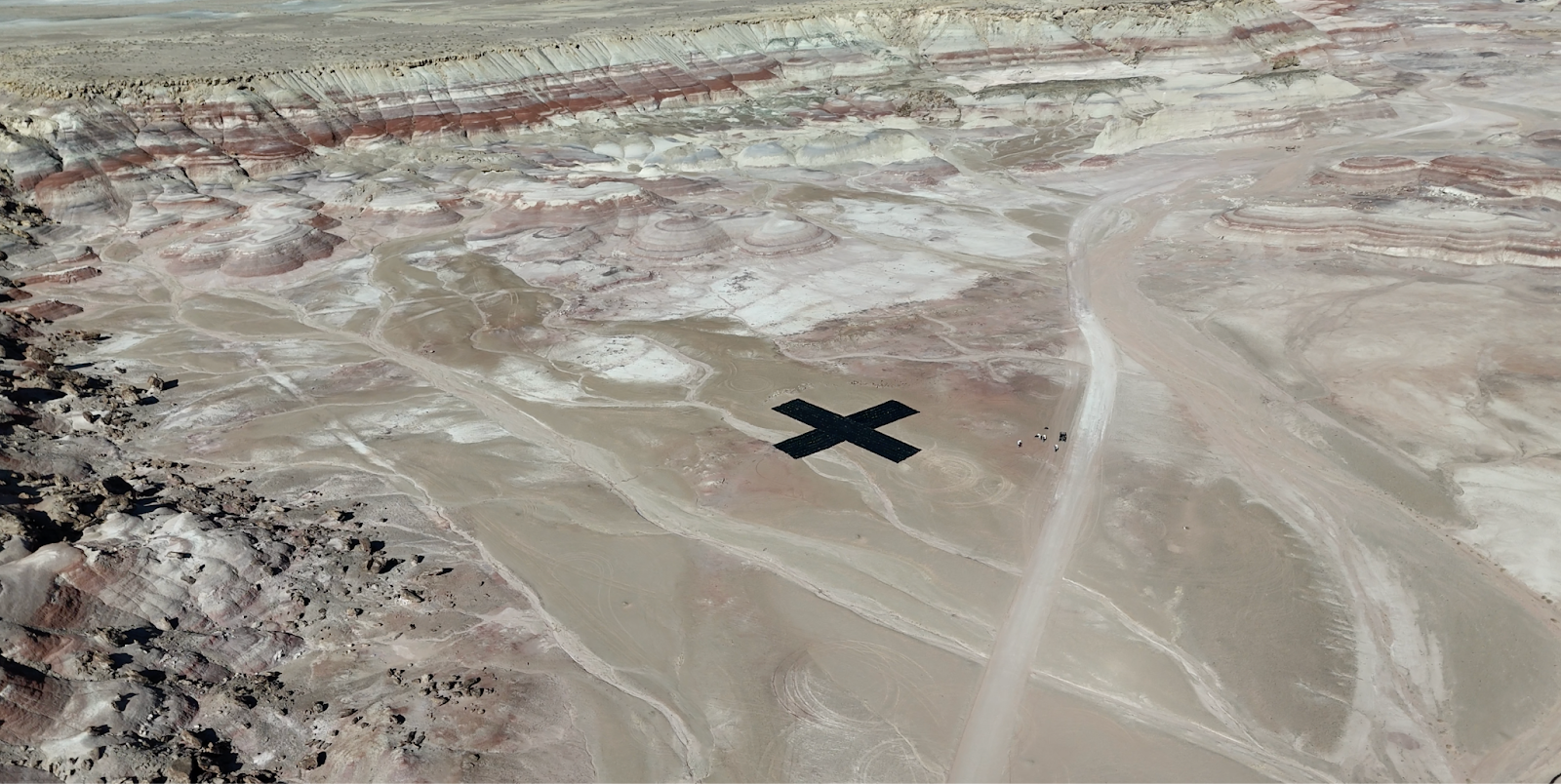
Children’s book: The purpose of this project was to draw a children’s book based on the real installations of the MDRS, the members of the crew and the projects we are carrying out.
During this week Anna has been able to draw the crew members, and several installations and items of itnerest such as the base from outside, the green hab, the main hab, the science dom and the rovers. Next week she plans to draw the observatory, the RAM and some landscapes, as well as paint them with watercolours.
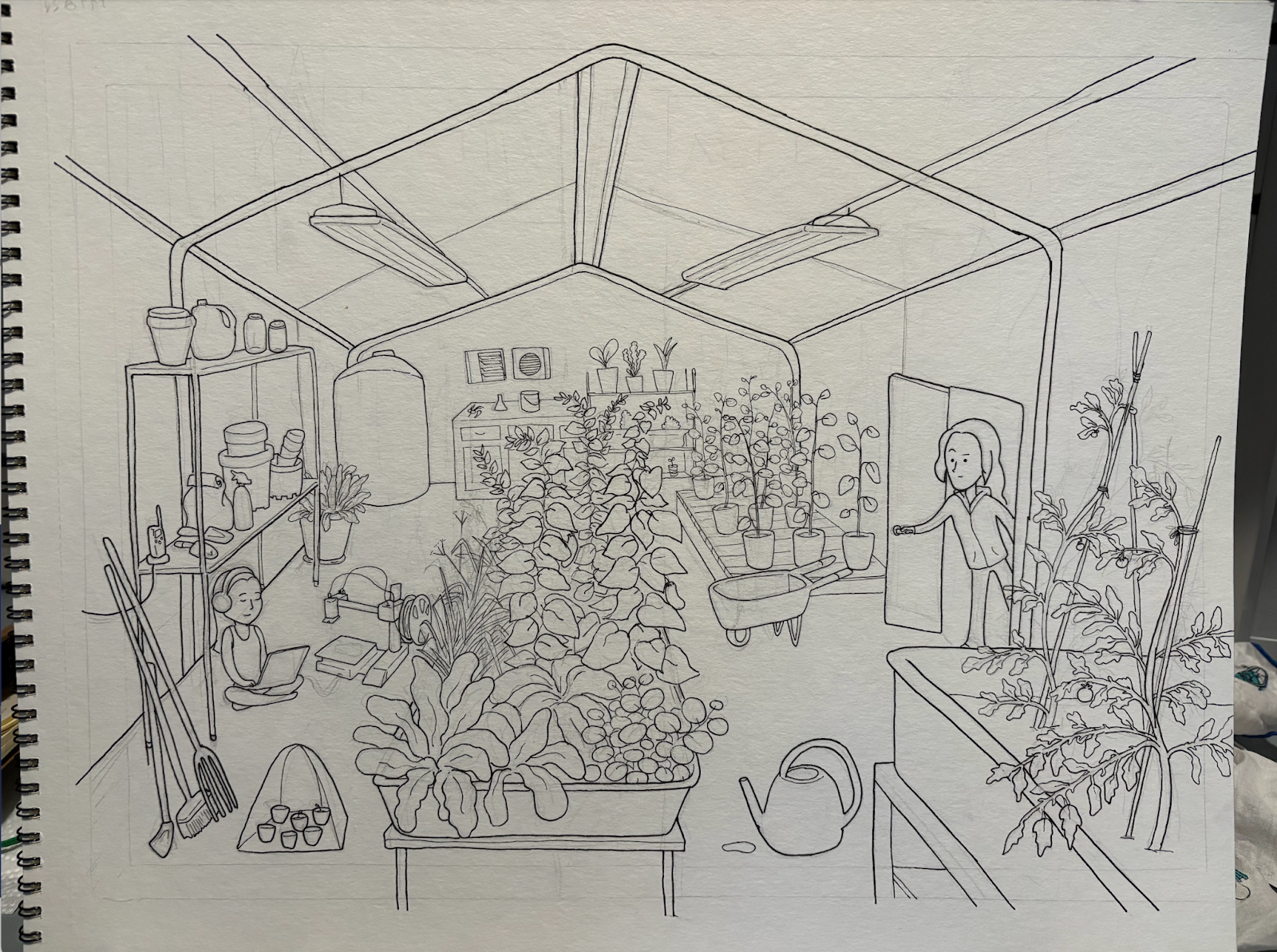
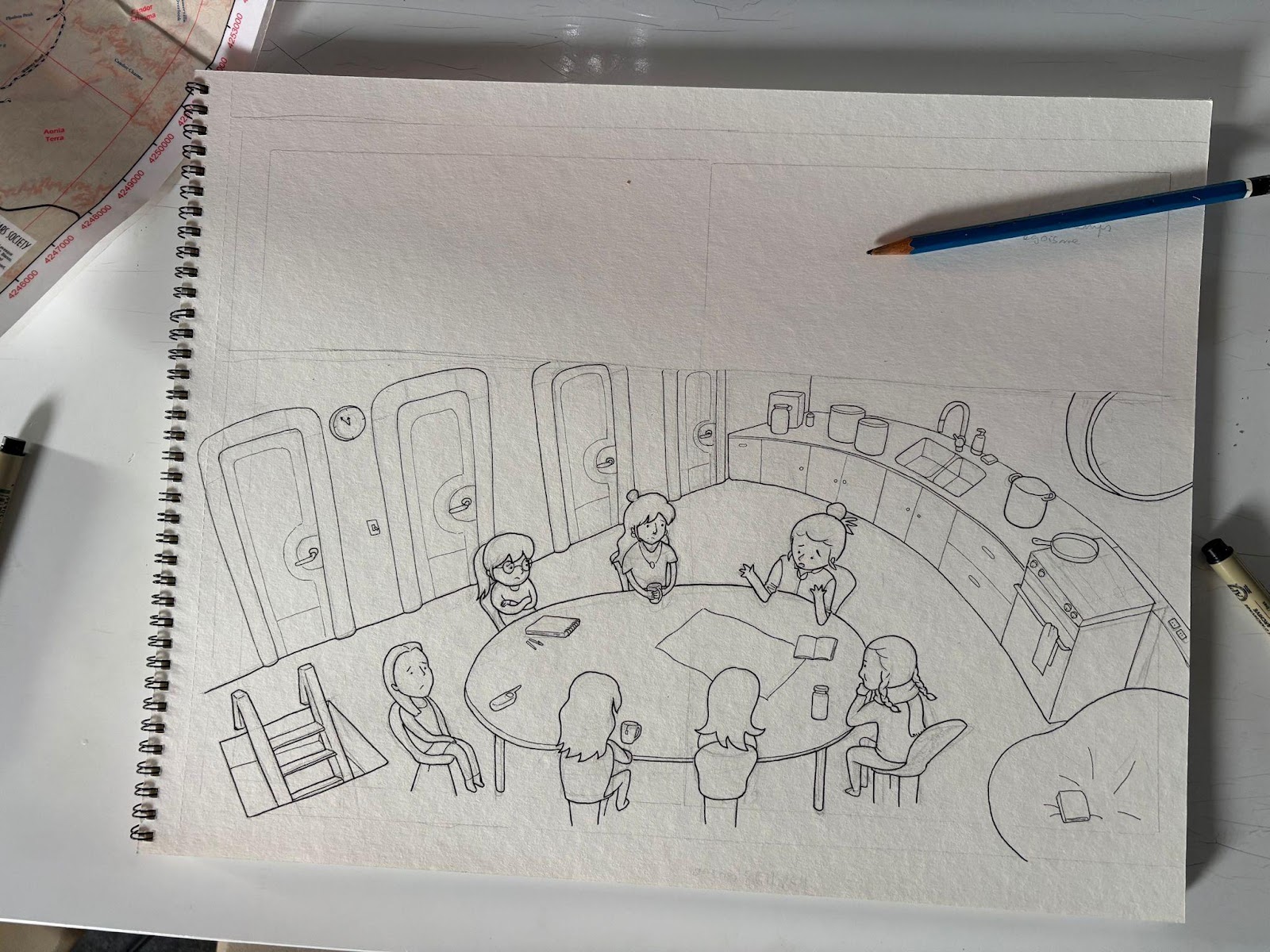
Estel Blay (Health and Safety officer & Scientist) is combining her health and safety responsibilities at the MDRS with outreach and engineering projects:
Spacetouille – Space Menu for Astronauts: The Singaporean organization Space Faculty created the International Space Challenge, proposing the task of designing a delicious menu for astronauts that contains all the nutritional values they require in a day, to be prepared and eaten by the Hypatia crew during their simulation at the MDRS. The winning team, made up of four children aged 8 to 9 years old from Singapore, wanted to incorporate part of their culture into the design of the menu. Everything was dehydrated and vacuum-sealed. The Hypatia crew commander prepared the entire dehydrated menu before the simulation.
The menu consisted of:
Breakfast: A protein bar made primarily from nuts.
Lunch: Singaporean rice balls and lentil soup.
Dinner: Bolognese pasta and beef stew.
Snack: Sweet potato snacks.
The crew had the menu on Sol 3 and will provide feedback based on a set of questions created by the kids, which will help them analyze any potential improvements to their design. The experiment was integrated into the nutritional plan designed as part of the exercise and nutrition routine tailored to the Hypatia crew’s specific nee
The image below shows the Crew Commander and HSO before preparing the dinner.
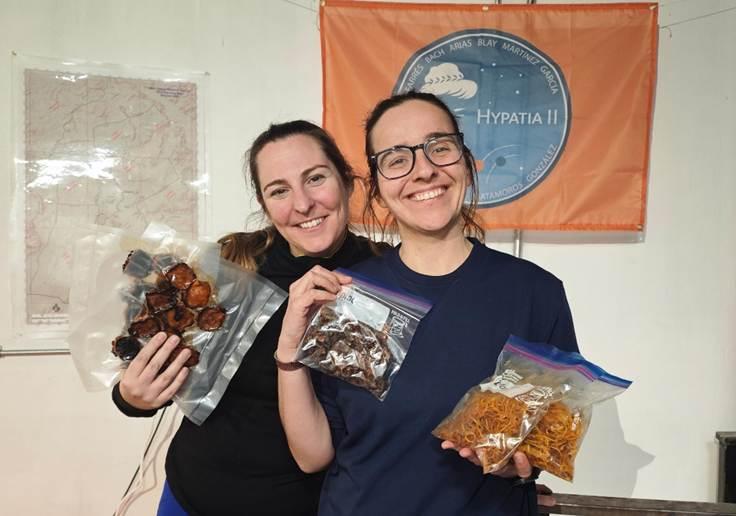
Marta Ferrer is the filmmaker of the crew. She has mostly been working on her documentary:
During this week Marta has been recording the daily life of the crew, as well as their projects both inside and outside the station. This includes: preparation of meals, preparation of EVAs, EVAs, installation of the macro piece of art, the installation of the reflector, analysis of rock samples in the Science Dom, Green Hab tasks, among others.
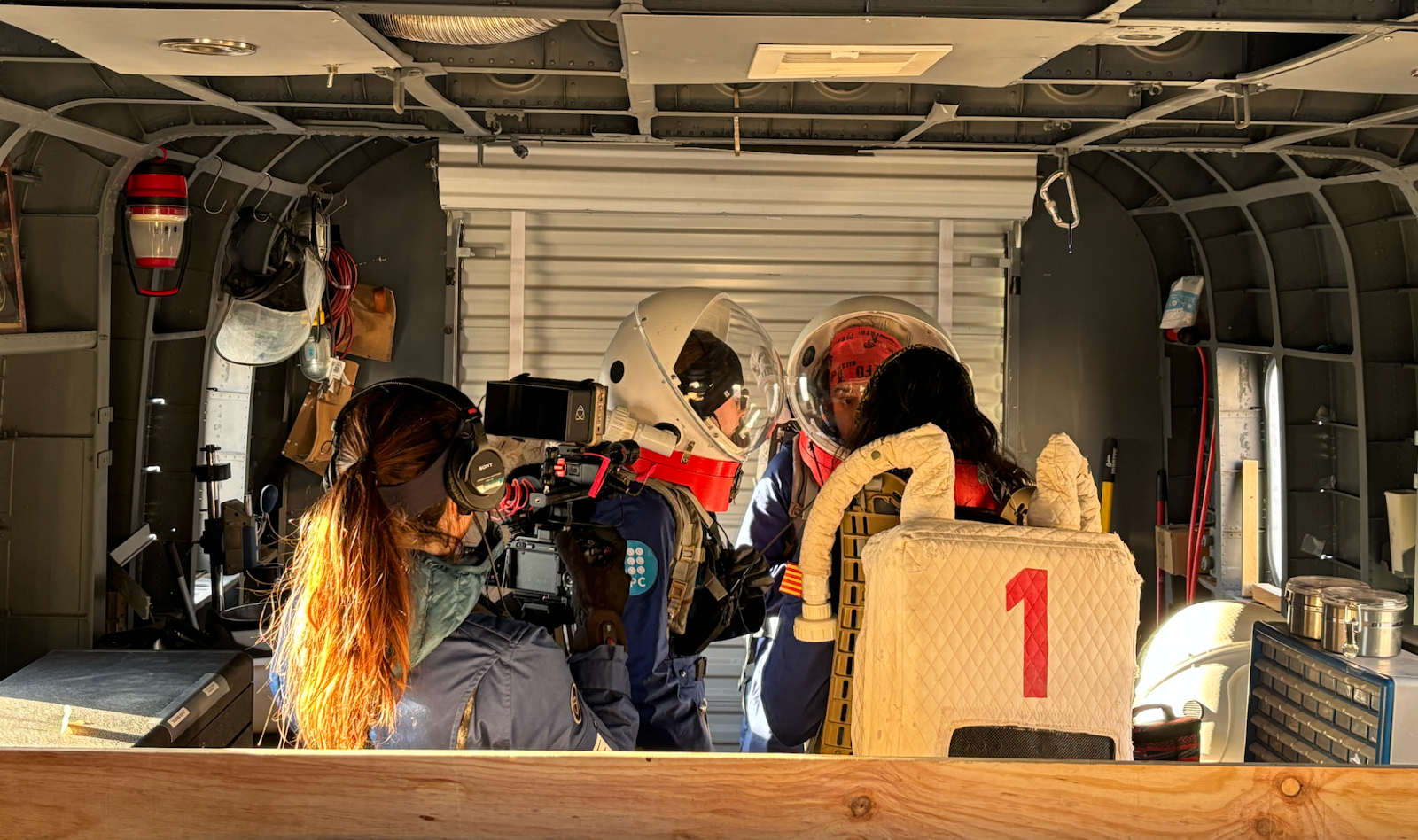
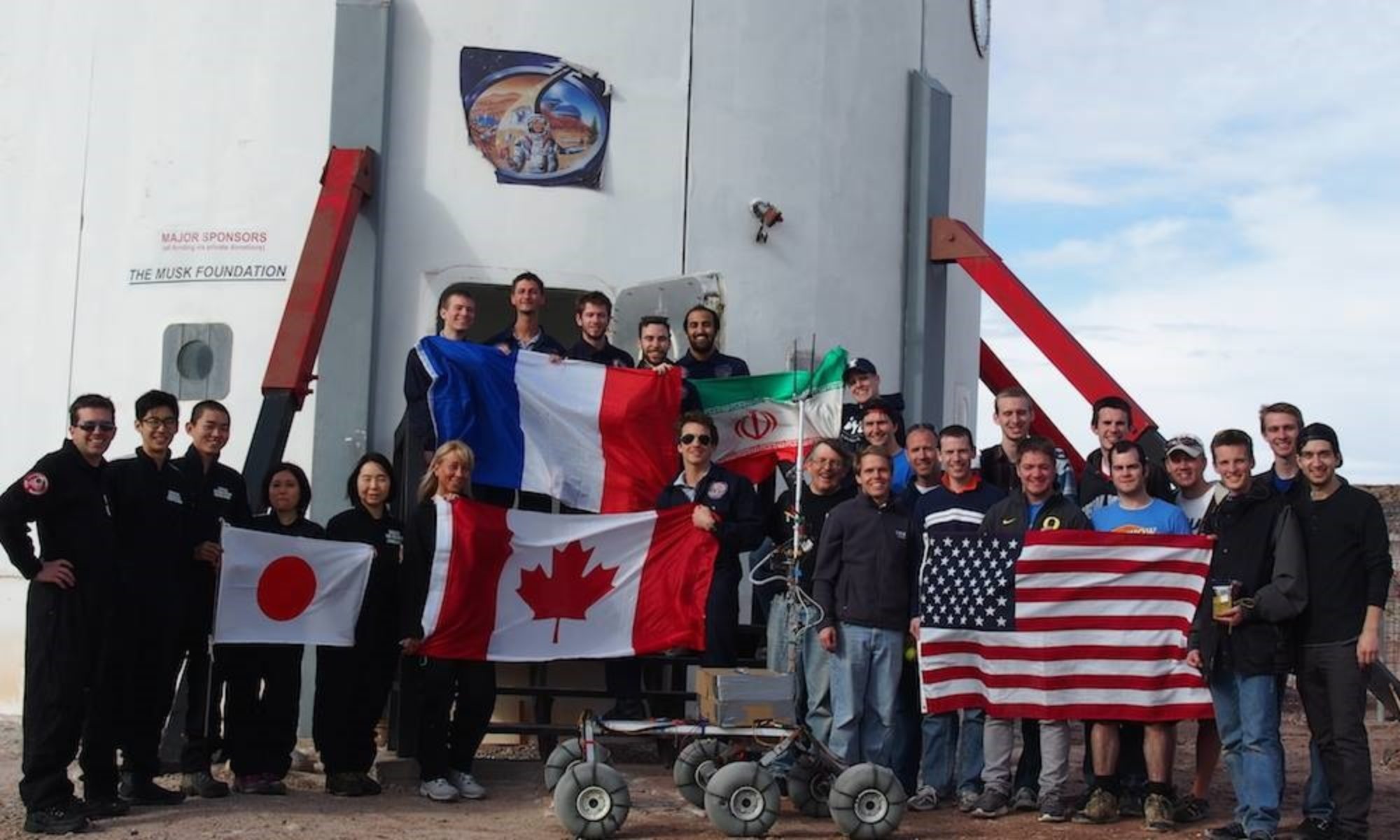
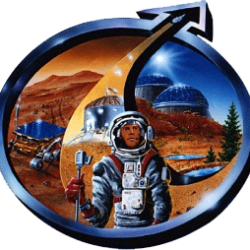
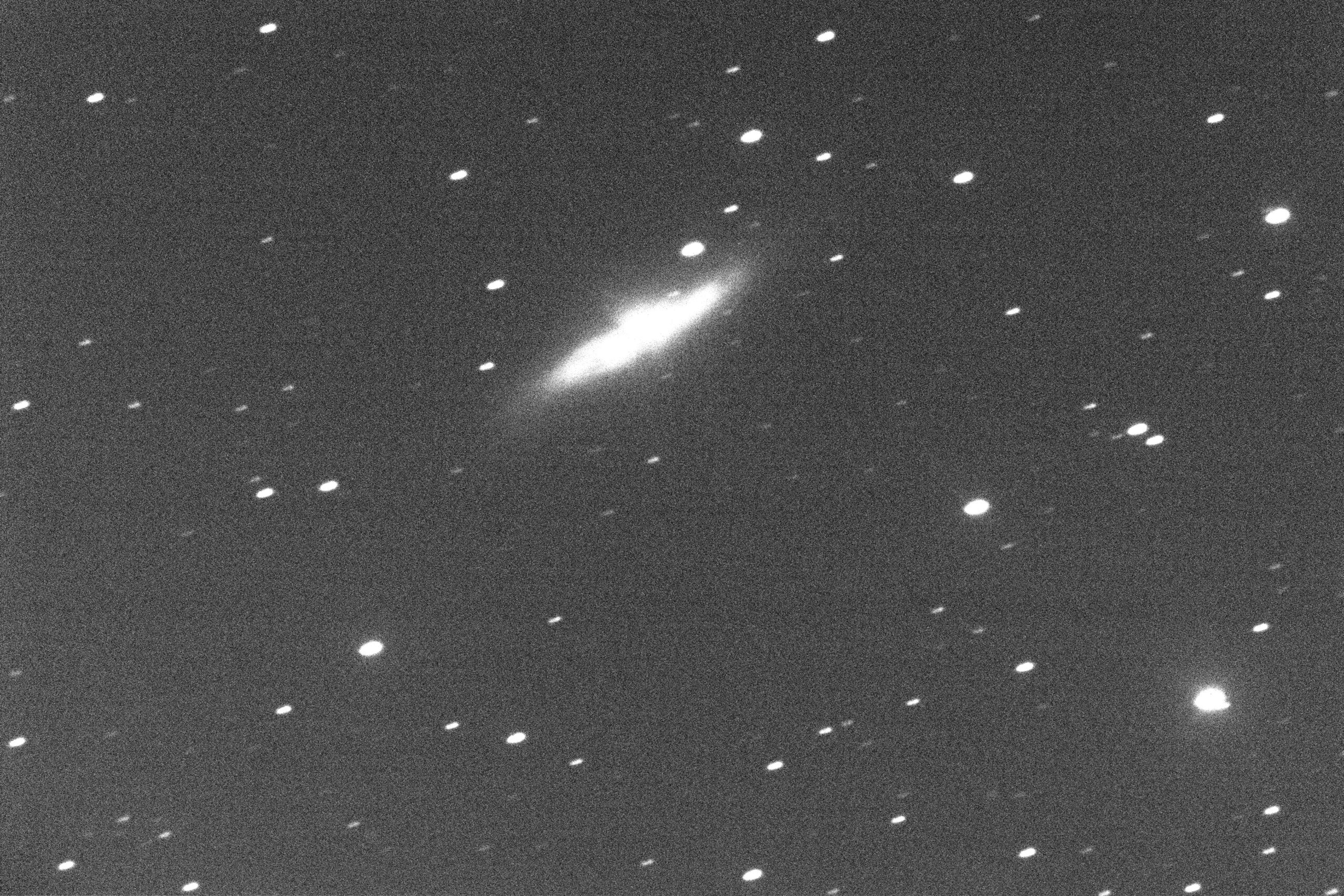
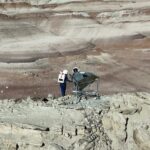
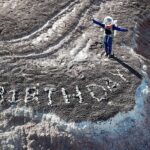
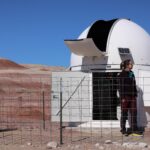
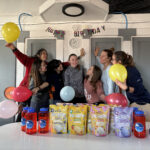
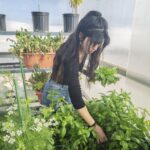
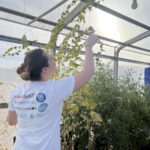
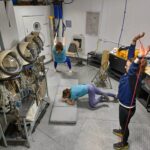
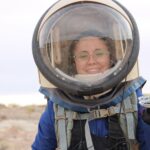
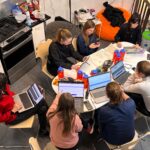
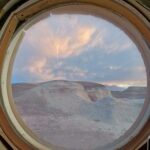
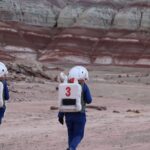
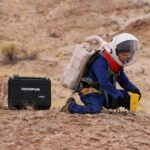
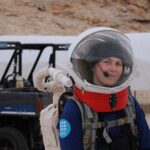
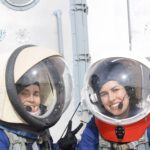
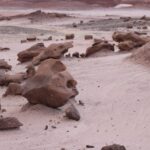
You must be logged in to post a comment.